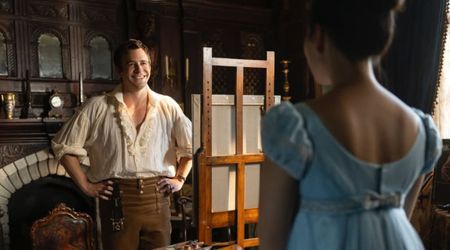'Challenger: The Final Flight': NASA changed after shuttle explosion but complacency led to another disaster

We are only a few months short of the 35th anniversary of the Space Shuttle Challenger disaster, yet the incident is as fresh as the day it happened in most minds. For others who were too young to remember or were not born yet, Netflix's latest docuseries, 'Challenger: The Final Flight' explores everything from the personal lives of the crew members, to the reasons for the disaster. On January 28, 1986, the Space Shuttle Challenger broke apart 73 seconds into its flight, killing all seven crew members aboard.
The disaster had huge repercussions for NASA when Ronald Reagan's administration formed the Rogers Commission to investigate the accident and resulted in a 32-month hiatus in the shuttle program. The Rogers Commission found that NASA's organizational culture and decision-making processes had been some of the key factors that led to the accident with the agency violating its own safety rules. It was also revealed that many engineers had voiced their concerns about the safety of the shuttle before its launch.
Needless to say, the first major inflight disaster in America's space program was also its first completely fatal one and the Challenger explosion served to change NASA in more ways than one. For NASA, which had launched its Space Shuttle program in 1981, the successes of these flights were paramount. But success also meant it had come in the public sphere, after all, the organization could only go forward with public support and government funding. This could explain why NASA decided to get the "first private citizen" ready for a space flight -- one who was not an astronaut, but a regular person. On then-President Ronald Reagan's recommendation, the person to be selected was to be a teacher.
The need for publicity and political attention could be what made NASA want to speed up the launch and stick to its unreasonable launch schedule. The Rogers Commission had concluded that this type of thinking had led NASA experts to overlook the potentially catastrophic situation that the faulty O-ring seals of the solid rocket boosters presented.
A few months after the Challenger explosion, the fallen astronauts' family members set up a nonprofit called the Challenger Center for Space Science Education, which seeks to spark students' interest in science, technology, and math by giving them exciting, hands-on experiences in these fields.
Many things changed after the Challenger explosion. The space shuttle had to be entirely re-certified and every last little technical piece was re-analyzed. The solid rocket boosters were completely redesigned -- and the next NASA space shuttle would not launch until more than two years later when the Space Shuttle Discovery was launched in September 1988.
Unfortunately, about fifteen years later, the space organization had gone into a bit of complacency. In February 2003, the Space Shuttle Columbia disintegrated on re-entry, killing all seven crew members. Like the O-ring for the Challenger, the incident of foam shedding which led to the disaster had been observed before but had not been noted as potentially catastrophic. In 2011, NASA retired its space shuttle program.
'Challenger: The Final Flight is now streaming on Netflix.










